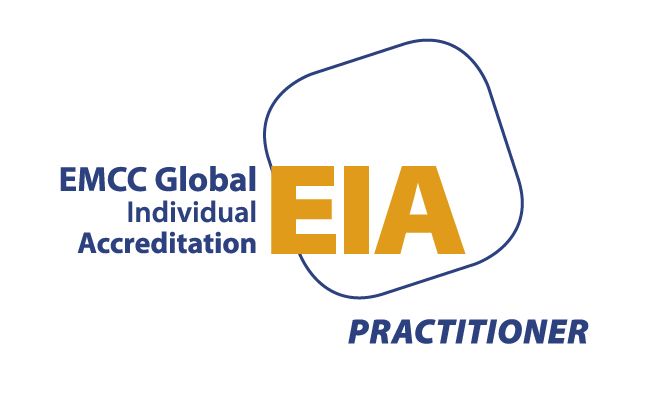
Blog Layout
Boundaries for better leadership
Barbra Carlisle • March 5, 2025
Lead with impact: Why boundary setting makes you a better leader (and person!)

Your mission is too important to let busyness steal your impact. The world needs leaders who don’t just run organisations but truly lead them—boldly, wisely, and with purpose.
So, here’s the question: Are you leading with clarity, or are you just surviving the chaos?
The Silent Crisis: Leaders Running on Empty
If we don’t set clear professional boundaries, we risk losing ourselves in the process. The constant demands of leadership—meetings, emails, fundraising, team issues—can make it feel like there’s never a right time to step back.
The problem? Without boundaries, burnout is inevitable. Think about your leadership style, and read the following to see if the descriptions resonate..
• The Guardian
in you wants to ensure everything is done properly—but without boundaries, work never stops.
• The Creative
side thrives on vision and innovation—but exhaustion drains inspiration.
• The Connector
loves to support others—but when do you get the support you need?
• The Nurturer
puts people first—but neglecting your own wellbeing isn’t serving them either.
• The Pioneer
drives forward relentlessly—but pushing too hard can mean losing sight of the long game.
The Evidence: Why Boundaries Matter for Leaders
The research is clear:
✅ Burnout is a leadership risk: A Harvard Business Review study found that nearly 70% of nonprofit leaders experience burnout—leading to poor decision-making, high turnover, and reduced organisational effectiveness.
✅ Rested leaders make better decisions: Neuroscience research from the University of California shows that mental fatigue reduces strategic thinking ability by up to 40%. When you’re drained, you’re reactive, not intentional.
✅ Healthy boundaries improve team culture: Leaders who model work-life balance create healthier teams. A McKinsey study found that organisations with strong leadership boundaries have 23% higher employee engagement.
✅ Nonprofit leaders struggle to switch off: Research from the Chronicle of Philanthropy found that 62% of nonprofit CEOs work late evenings and weekends—even though studies show overwork decreases productivity after 50 hours per week.
So, How Do You Set Boundaries Without Guilt?
The idea of boundaries can feel uncomfortable—especially in a sector where giving, supporting, and showing up is central to the mission. But boundaries aren’t about saying no to your work; they’re about saying yes to leading well.
1. Define What’s Non-Negotiable for You
If you don’t set the boundaries, the demands of leadership will set them for you. Get clear on:
• Your working hours (and stick to them!)
• When you’ll check emails (instead of being available 24/7)
• What leadership priorities you’ll protect (vs. constant reactive work)
📌 Practical step: Block time in your calendar for deep work, strategic thinking, and rest—just like you would for an important meeting.
A study in the Journal of Occupational Health found that leaders who set clear availability hours had lower stress levels and higher long-term productivity.
2. Communicate Your Boundaries with Confidence
Your team and stakeholders won’t respect your boundaries if they don’t know what they are. Be upfront and frame boundaries as a way to be a better leader—not a lack of commitment.
Try saying:
“For me to bring my best thinking to this organisation, I’m protecting time for strategic work on Fridays.”
“I don’t check emails after 7 PM, but I’ll respond first thing in the morning.”
“I want to be fully present in meetings, so I won’t take calls during leadership sessions.”
A Stanford study found that leaders who communicate clear boundaries gain more respect, not less—and create healthier workplace cultures.
3. Lead by Example—Give Permission for Others to Set Boundaries
If you set boundaries but expect your team to be ‘always on,’ they won’t follow your lead. Create a culture where rest is valued as much as productivity.
• Encourage team members to step away from emails in the evening.
• Model taking breaks and leaving work on time.
• Recognise that sustainable leadership is about pace, not just intensity.
A Deloitte study found that organisations with leaders who openly prioritise wellbeing see a 25% improvement in overall team performance.
4. Reframe Rest as a Leadership Responsibility
You can’t lead well if you’re exhausted. Taking time to recharge isn’t selfish—it’s strategic. The best leaders protect their energy because they know:
🚫 Overworking = Diminished creativity
🚫 Always being available = Reactive leadership
🚫 No time for thinking = No time for growth
What’s one small shift you can make this week to protect your time and energy?
Final Thought: Boundaries Make You a Better Leader
The world needs you at your best—not burnt out, overwhelmed, and running on fumes. The stronger your boundaries, the stronger your leadership.
So this week, challenge yourself:
🔹 What’s one boundary you need to reinforce?
🔹 What’s one thing you’ll stop doing to create more space for what matters?
Because leading with impact isn’t about doing more—it’s about leading wisely.
Share
Tweet
Share
Mail

By Barbra Carlisle
•
March 16, 2025
As a leader I am sure you will agree that leadership is a rewarding journey on the whole. However, it’s often a journey that is travelled under significant pressure. The weight of responsibility, decision-making, and managing people can lead to stress that doesn't just impact you but ripples out to your team, organisation, and your family life. Recognising, understanding, and managing this stress is crucial for sustaining effective leadership and fostering healthy workplace cultures. The Dynamics of Stress in Leadership Stress manifests differently for every leader. For some, it may show up as physical symptoms like fatigue, headaches, or difficulty sleeping. For others, it's emotional or behavioural—irritability, indecisiveness, or withdrawal. Prolonged stress can lead to burnout, reduced productivity, and poor decision-making (Harvard Business Review, 2022). Stress isn’t always about workload. It can stem from unclear expectations, navigating complex team dynamics, or facing the weight of constant change. The challenge is that leaders often feel they must carry this weight silently, believing vulnerability undermines authority. Yet, the reality is that unaddressed stress can lead to miscommunication, disengagement, and a culture where pressure becomes the norm rather than the exception. The Ripple Effect of Leadership Stress Individual Impact: Chronic stress can erode a leader’s health, relationships, and overall wellbeing. It can lead to poor mental health outcomes and diminish one’s sense of purpose and satisfaction in work. Family Impact: The stress a leader experiences doesn't stay at the office. It can strain relationships at home, reduce emotional availability, and contribute to feelings of guilt and isolation. Team Impact: Leaders set the tone for their teams. Stress can result in less empathetic leadership, strained communication, and a lack of psychological safety. This may discourage innovation and increase turnover. Organisational Impact: Persistent stress in leadership can contribute to a toxic culture, poor performance, and higher absenteeism rates. It affects organisational resilience and long-term sustainability (CIPD, 2025). Recognising Stress Managing stress starts with awareness. Leaders need to recognise not just when they are under pressure but how it manifests. Reflection is key, as is understanding the unique triggers and patterns that heighten stress levels. Here, subtle insights from personality frameworks like the 5 Voices can offer valuable guidance. Each leadership style may respond to stress differently. For instance: • Leaders who prioritise harmony may feel overwhelmed when facing unresolved conflict. • Leaders who value precision and excellence might experience stress when faced with ambiguity or rushed decisions. • Vision-oriented leaders could feel trapped if they're bogged down in details. • Process-driven individuals might struggle when systems break down or when rapid change disrupts routines. • Empathetic, people-focused leaders may carry the emotional weight of their team's wellbeing. Understanding these tendencies can help leaders pinpoint when stress is rising and why. It also highlights that there's no one-size-fits-all solution. Managing stress is about recognising what matters most to you and ensuring those needs are met sustainably. Strategies for Managing Stress Pause and Reflect: Take time to identify stress triggers and patterns. Journaling or quiet reflection can help in recognising emotional signals early. Connect with Peers: Leadership can be lonely. Building networks where honest conversations are welcomed can provide perspective and reduce isolation. Embrace Healthy Boundaries: Knowing when to switch off is vital. Leaders who model balance encourage the same for their teams. Reframe Pressure: Sometimes, changing the narrative around challenges can reduce their emotional weight. This doesn't ignore reality but reshapes how it's perceived. Coaching Support: Engaging with a coach offers a safe space to explore challenges, build resilience, and develop strategies for maintaining balance. Coaching can provide insights into stress responses and practical ways to manage them without compromising leadership effectiveness. To summarise Stress is an inevitable part of leadership, but it doesn't have to define it. By recognising how stress manifests, understanding personal triggers, and implementing practical strategies, leaders can sustain their wellbeing and lead with clarity and purpose. To help understand what your triggers are why not take our free 5 Voices assessment here Investing in personal development and seeking coaching support is not a sign of weakness but a commitment to sustainable leadership. It ensures that the leader, their team, and the wider organisation thrive—not in spite of challenges but through navigating them with resilience and authenticity. Book a call with me here to talk through what you are experiencing and what you would like to achieve. Harvard Business Review. (2022). Managing Stress as a Leader. CIPD. (2025). https://www.cipd.org/uk/knowledge/factsheets/stress-factsheet/ Giant Worldwide. (n.d.). The 5 Voices Framework.

By Barbra Carlisle
•
March 16, 2025
In leadership it’s easy to believe that success comes from having a plan and going for it perhaps with big, bold moves. But the reality? Curve balls. Progress is almost always built step by step. And that’s not just okay—it’s powerful. Let’s be tenacious! Leader’s who succeed are tenacious, they show determination and persistence in pursuing goals despite challenges and setbacks. Tenacity encompasses: - Resilience : Bouncing back from failures and continuing to push forward. - Commitment : Staying dedicated to the vision and objectives, even when progress is slow. - Problem-Solving: Continuously seeking solutions and not giving up when faced with obstacles. - Inspiration : Motivating and encouraging the team to stay focused and driven, no matter the difficulties. Tenacious leaders are often seen as role models who inspire others to persevere and achieve success. Tenacious leaders take one step at a time. The Small Step Advantage Why do small steps matter so much? Because they build momentum. Every small, intentional action creates a sense of progress, which fuels motivation and confidence over time. Recognizing small wins can significantly boost motivation and performance (HBR, 2011). Regardless of your leadership style, borne from your personality preferences, small steps help achieve goals. For leaders who value stability, small and steady progress provides a reliable foundation for sustainable growth. For those who dream big, small steps turn ambitious visions into achievable milestones. And for leaders focused on relationships, each small moment of connection strengthens trust and fosters deeper engagement. Meanwhile, those who thrive on supporting others can find meaning in everyday actions that nurture growth, while leaders driving towards bold goals benefit from breaking ambitions into clear, actionable steps that maintain momentum (McKinsey, 2022). How to Lead with Tenacity, One Step at a Time 1. Define What Progress Looks Like: Start by getting clear on what small progress means for you and your team. It might be setting weekly goals, holding reflective check-ins, or focusing on one key priority each day. 2. Celebrate Consistent Wins: Don’t underestimate the power of acknowledging small achievements. Recognition of progress—no matter how small—builds momentum and motivation within teams. 3. Embrace Uncertainty: You won’t always know the next step, and that’s okay. Tenacity means trusting the process, learning as you go, and leaning into uncertainty with curiosity, not fear. 4. Seek Support: No leader thrives in isolation. Connect with peers, mentors, or a coach to reflect on your progress and challenges. Feedback and perspective can be the catalyst for confident next steps. 5. Reflect and Refine Take time each week to reflect. What’s working? What needs adjusting? Reflection isn’t a luxury; it’s a leadership necessity for long-term resilience. The Real Secret to Sustainable Leadership Success isn’t about speed or perfection. It’s about showing up, step by step, and staying committed to the journey. The leaders who thrive are those who understand that persistence isn’t about relentless hustle—it’s about consistent, thoughtful progress. So, if you’re feeling overwhelmed or uncertain, remember this: small steps lead to big change. And that’s more than enough. Go to The Unlikely Executive Podcast Episode 5 where I explore the power of tenacity in leadership with CEO and Founder of StrokeInformation Nick Clarke. If you’re looking to build resilience and lead with clarity, this episode is for you. Take a step now Come and join me on 5 Voices for Teams programme where we cover tenacity, resilience, leadership and team performance. You get a chance to celebrate your approach to tenacity while understanding other perspectives, leading to enhanced performance for everyone. I support leaders in non-profit organisations and those passionate about Leadership for Good. My mission is to help leaders recognise their brilliance—and that of their teams—so growth is sustained and accelerated.

Subscribe to be the first to hear about our latest news and events
Join the Newsletter
You're in! Thanks for signing up.
Oops, there was an error sending your message.
Please try again later

Copyright 2022 GLEE COACHING CONSULTANCY. Site design by fireflydigital.co.uk
